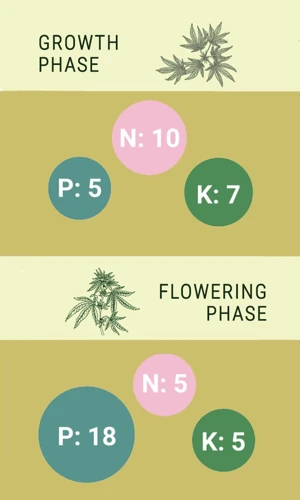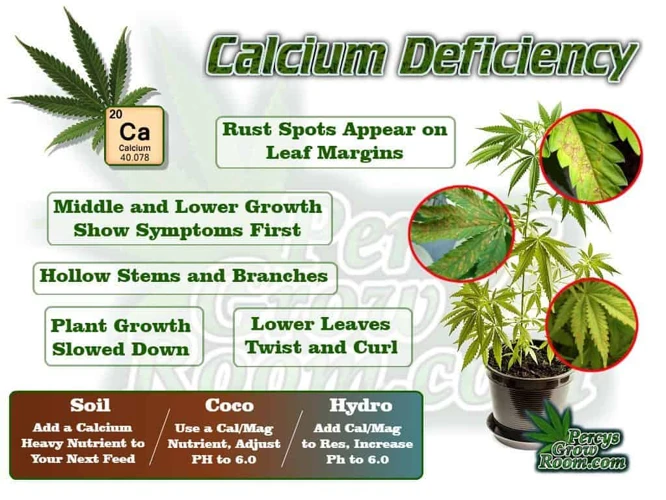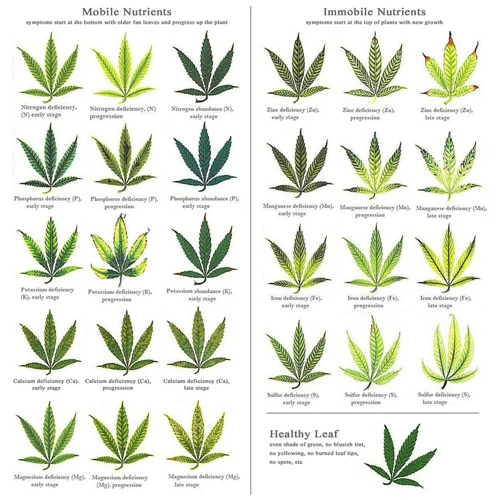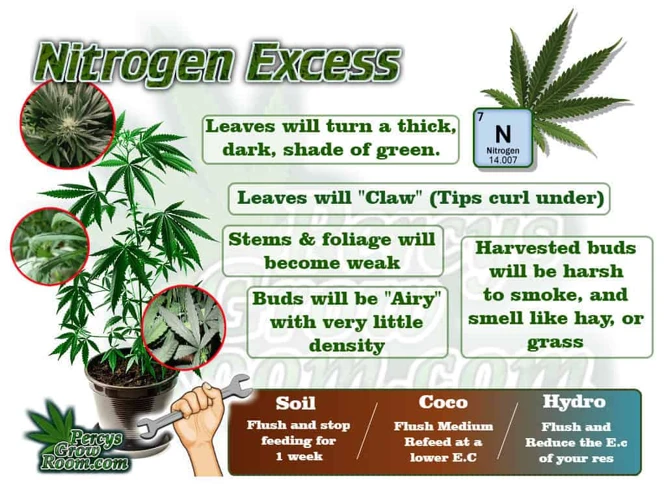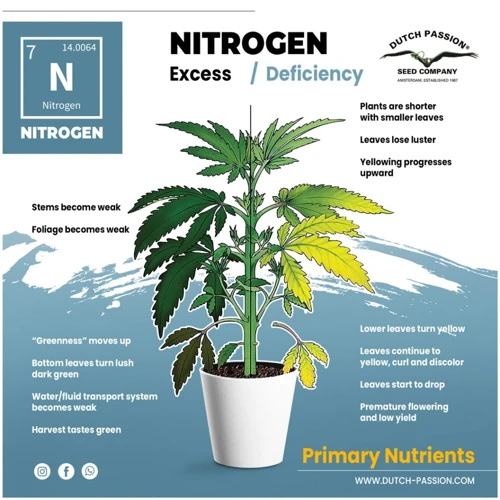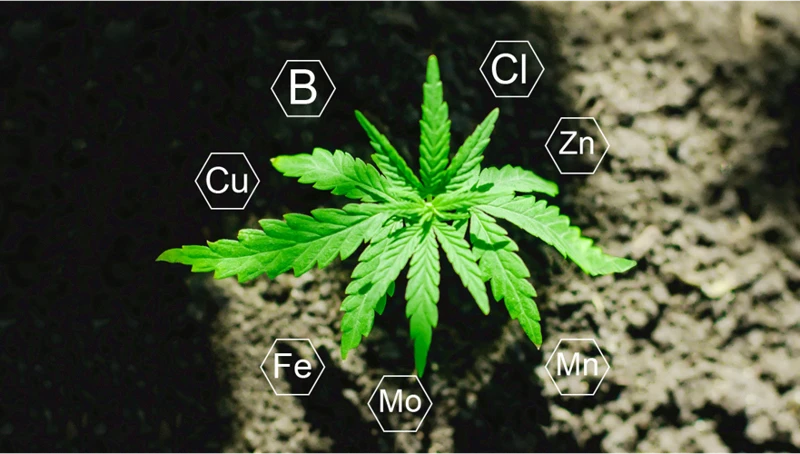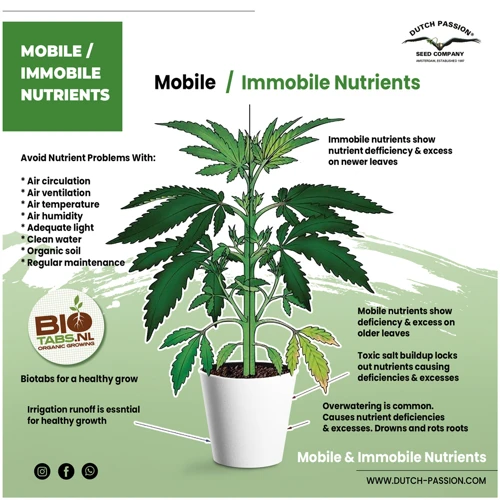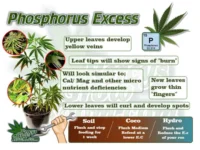
Why Micronutrients are Crucial for Cannabis Growth
As a cannabis grower, you know that providing your plants with the right nutrients is essential for their growth and development. While macronutrients like nitrogen and phosphorus play a vital role in plant health, equally important are the micronutrients. These essential elements are required in small quantities but are crucial for optimizing cannabis growth and maximizing yield. But with so many micronutrient supplements on the market, it can be challenging to understand which ones to use and how to administer them correctly. In this article, we’ll explore the importance of micronutrients in cannabis growth, the symptoms of micronutrient deficiencies, how to administer micronutrients to your plants, and the best micronutrient supplements to use.
What are Micronutrients?
Contents
When it comes to growing healthy and thriving cannabis plants, there are many factors to consider. One key aspect that can often be overlooked is the importance of micronutrients. These small, but crucial, elements play a crucial role in plant growth and development. But what exactly are micronutrients? In this section, we will discuss the definition of micronutrients and their essential role in cannabis cultivation. We will explore the different types of micronutrients required for optimal plant growth and how to ensure that your plants are receiving adequate amounts. Understanding the significance of micronutrient supplementation is essential for cultivating healthy, high-quality cannabis plants.
Defining Micronutrients
Micronutrients are essential elements required in small amounts for the healthy growth and development of cannabis plants. These nutrients play a crucial role in maintaining the plant’s metabolic functions, such as converting light into energy through photosynthesis.
There are six primary micronutrients that cannabis plants need for optimal growth and development. They include boron, copper, iron, manganese, molybdenum, and zinc.
Boron: critical for cell division and seed development.
Copper: necessary for photosynthesis, carbohydrate and protein metabolism.
Iron: crucial for the formation of chlorophyll and essential for enzyme activity.
Manganese: necessary for photosynthesis and aiding in the absorption of other nutrients.
Molybdenum: required for nitrogen metabolism.
Zinc: essential for enzyme activity and necessary for the formation of proteins.
While these micronutrients are required in small amounts, they are just as important as macronutrients such as nitrogen, phosphorus, and potassium. Without them, cannabis plants may experience a lack of proper growth and development, leading to reduced yields and potency.
The Role of Micronutrients in Plant Growth
Micronutrients are essential for plant growth and development, but they are required in far smaller quantities than macronutrients. However, their role in maintaining plant health is equally important.
Micronutrient deficiencies can lead to problems such as reduced growth, yellowing of leaves, and lower yields. Each micronutrient plays a crucial role in different aspects of plant growth and development.
Here is a table summarizing the different roles of each micronutrient:
| Micronutrient | Role in Plant Growth |
|---|---|
| Boron | Facilitates cell division and vegetative growth |
| Copper | Assists in photosynthesis and enzyme activation |
| Iron | Helps with chlorophyll production and electron transport |
| Manganese | Aids in photosynthesis, respiration, and nitrogen metabolism |
| Molybdenum | Enables the conversion of nitrogen to plant proteins and amino acids |
| Zinc | Important for enzyme activity, protein synthesis, and growth hormone production |
These micronutrients work in conjunction with macronutrients to promote healthy plant growth. Without them, plants may become stunted, susceptible to disease, and produce lower yields. It is important for cannabis growers to ensure that their plants have access to the right balance of micronutrients throughout their life cycle.
List of Essential Micronutrients for Cannabis Growth
Cannabis plants require several essential micronutrients to grow and develop properly. These micronutrients are essential nutrients that the plant needs in small quantities in order to perform vital physiological functions.
The essential micronutrients for cannabis growth include:
- Boron: helps with the transport and metabolism of sugars and other nutrients, regulates plant hormones, strengthens cell walls, and promotes flowering.
- Copper: aids in the formation of chlorophyll, helps with photosynthesis, and assists in the activation of enzymes.
- Iron: is used in the production of chlorophyll, and is also essential for the oxidation process that releases energy from sugars and other nutrients.
- Manganese: facilitates the process of photosynthesis, protects against oxidative stress, and helps with the production of enzymes and chlorophyll.
- Molybdenum: is necessary for the conversion of nitrates into amino acids, the building blocks of proteins, and also plays a role in the regulation of hormones and enzymes.
- Zinc: is needed for the production of chlorophyll, and is also involved in the regulation of enzymes and hormones, as well as the growth and development of new plant tissues.
While these micronutrients are necessary for proper growth and development, it is important to keep in mind that too much of a good thing can be harmful. Overuse of micronutrient supplements can lead to toxicity, which can cause nutrient imbalances and affect the overall health of the plant. It is important to monitor micronutrient levels and adjust supplementation accordingly.
Why Cannabis Needs Micronutrients
It might be surprising to some, but cannabis is a complex plant with a multitude of intricate needs for healthy growth and development. While macronutrients, such as nitrogen or phosphorus, are essential for plant growth, micronutrients play an equally crucial role in ensuring that cannabis plants thrive. Without the proper balance of micronutrients, cannabis can experience stunted growth, low yields, and be susceptible to plant diseases. In this section, we explore the three main reasons why micronutrients are essential for healthy cannabis growth and how this can improve the potency and yield of your harvest.
Promoting Healthy Growth and Development
Micronutrients play a vital role in promoting healthy growth and development of cannabis plants. Boron aids in cell wall development and helps transport sugars within the plant. Copper helps form chlorophyll in the plant, which is responsible for photosynthesis. Iron is essential for the production of chlorophyll and also helps with nitrogen fixation. Manganese assists in enzyme activity and the production of chlorophyll. Molybdenum is necessary for nitrogen fixation and helps in the production of enzymes. Zinc is needed for the production of auxins, hormones that promote cell elongation and root development.
Without these essential micronutrients, cannabis plants will grow poorly and be more susceptible to pests and diseases. Leaves may also yellow, curl, or show spots of discoloration.
It is important to ensure that each micronutrient is present in the proper amount, as too much of one micronutrient can lead to toxicity and inhibit the absorption of other micronutrients. A lack of micronutrients can also lead to stunted growth, poor yield, and decreased potency.
It is crucial to provide cannabis plants with a balanced micronutrient supplement to promote healthy growth and development.
Improving Potency and Yield
Micronutrients not only promote healthy cannabis growth, but also play a crucial role in improving both potency and yield. Potassium, for example, is essential for the development of the plant’s buds and flowers, while magnesium is needed for chlorophyll production and enzyme function.
Here are some other micronutrients and their impacts on cannabis potency and yield:
- Calcium: Helps to strengthen the plant’s cell walls, leading to larger, stronger buds and higher yields.
- Phosphorus: Important for energy transfer and essential for flower development. Increased phosphorus levels can lead to bigger and denser buds with higher levels of THC.
- Sulfur: Necessary for the production of terpenes, which not only contribute to the plant’s aroma and flavor but also have potential therapeutic benefits.
- Boron: Improves plant cell division and is necessary for reproductive functions, resulting in increased potency and yield.
- Zinc: Helps with enzyme production and hormone regulation, leading to improved plant growth and increased yields.
A lack of micronutrients can lead to stunted growth and lower yields, so it is important to ensure that your cannabis plants are receiving all the necessary nutrients to thrive. In addition to macro and micronutrients, other factors such as lighting, temperature, and humidity all play a role in cannabis growth and development. By providing your plants with the appropriate amount of micronutrients, you can maximize their potential for potency and yield.
Protecting Against Common Plant Diseases
Micronutrients play a crucial role in protecting cannabis plants against common plant diseases. Lack of proper micronutrient levels can make plants more susceptible to disease and infection. Here are some micronutrients that can help protect against common plant diseases:
| Micronutrient | Disease Protection |
|---|---|
| Boron | Protects against hollow stems, stem rot, and other fungal diseases |
| Copper | Prevents bacterial and fungal growth, as well as mold and mildew |
| Iron | Helps prevent leaf spotting and yellowing, as well as root rot and mold |
| Manganese | Helps prevent root rot and other fungal infections |
| Molybdenum | Helps prevent fungal and viral infections, and promotes healthy growth |
| Zinc | Helps prevent mold and mildew, as well as rust and other fungal infections |
These micronutrients can be supplemented through soil amendments, hydroponic solutions, and foliar sprays, as discussed earlier. Regularly administering the appropriate micronutrients can help protect your cannabis plants from disease, ultimately leading to a healthier and higher yielding crop.
Symptoms of Micronutrient Deficiencies
Micronutrient deficiencies in cannabis plants can lead to a range of problems in growth and development. Each essential micronutrient plays a unique role, and a deficiency of any one can cause significant issues. By understanding the symptoms of micronutrient deficiencies, growers can take proactive steps to address the issue before it significantly impacts their cannabis plants.
Boron Deficiency: Boron is an essential micronutrient for the metabolic processes of cannabis plants, including the uptake of calcium, nitrogen, and phosphorus. The deficiency of boron can cause stunted growth, yellowing and dying of buds or shoots, and hollow stems.
Copper Deficiency: Copper is essential for the growth of young cannabis plants, playing a vital role in photosynthesis and respiration. Copper deficiency typically occurs in younger plants and causes the leaves to take on a bluish-green hue.
Iron Deficiency: Iron plays a crucial role in the production of chloroplasts, and its deficiency can lead to poor photosynthesis, weak stems, yellowing of leaves (chlorosis), and death of shoots.
Manganese Deficiency: Manganese plays an essential role in the creation of chloroplasts, and its deficiency can cause the stunted growth of shoots, yellowing of leaves, and premature death of buds.
Molybdenum Deficiency: Molybdenum serves as a critical enzyme for the uptake of nitrogen in cannabis plants. Its deficiency can lead to yellowing of leaves, particularly in the older leaves, and the growth of whip-like shoots.
Zinc Deficiency: Zinc is a crucial component for the production of chlorophyll and enzymes, and its deficiency can cause stunted growth, chlorosis, and yellowing of leaves.
Each of these micronutrient deficiencies can cause significant disruption to the growth and health of cannabis plants. By understanding and identifying the symptoms of micronutrient deficiencies, growers can take proactive steps to address the issues and maintain healthy growth and development in their cannabis plants.
How to Administer Micronutrients to Cannabis Plants
Providing sufficient micronutrients for cannabis plants is critical for healthy growth and optimum yield. However, administering these essential elements can be challenging for growers who are new to the process. It requires careful consideration of the growing medium, nutrient requirements, and the growth stage of the plants. In this section, we will explore different methods for supplementing micronutrients including soil amendments, hydroponic solutions, and foliar sprays. Understanding how to effectively administer micronutrients to cannabis plants can help to improve plant health and overall yield.
Soil Amendments
Soil amendments are a great way to add micronutrients to your cannabis plants. These amendments are added to the soil before planting or during the growing process. One of the most popular soil amendments is compost. Compost is made of organic materials that have broken down into a nutrient-rich soil amendment. This amendment can be added to the soil before planting or as a top dressing during the growing process. Other popular soil amendments that contain micronutrients include bone meal, blood meal, and fish emulsion.
| Soil Amendment | Benefits |
|---|---|
| Compost | Provides a slow release of micronutrients |
| Bone Meal | High in phosphorous and contains small amounts of micronutrients |
| Blood Meal | High in nitrogen and contains small amounts of micronutrients |
| Fish Emulsion | High in nitrogen and contains small amounts of micronutrients |
Before using any soil amendments, it is important to test the soil to determine what nutrients are lacking. This will help you choose the appropriate amendment for your cannabis plants. Another thing to keep in mind is that some soil amendments can alter the pH level of the soil. It is important to monitor the pH level of your soil and make adjustments as necessary. By using soil amendments, you can provide your cannabis plants with a slow, steady supply of micronutrients that will support healthy growth and development.
Hydroponic Solutions
Hydroponic solutions offer a way to directly add micronutrients to the water in a hydroponic system. This method involves dissolving the correct amount of micronutrient supplement into the water, which is then absorbed by the plant’s roots. It is important to carefully measure and mix the solution according to the manufacturer’s instructions to avoid over or under-dosing.
Here are some common hydroponic micronutrient solutions:
- General Hydroponics Flora Series – a popular three-part solution that includes all necessary micronutrients for hydroponic cannabis growth. Each part is formulated for different stages of growth: “Grow” for vegetative growth, “Micro” for nutrient absorption, and “Bloom” for flowering.
- Botanicare Cal-Mag Plus – a calcium and magnesium supplement that also includes trace amounts of iron and zinc. This solution can be used to correct deficiencies, as well as provide an additional source of calcium and magnesium for hydroponic plants.
- Advanced Nutrients Sensi Cal-Mag Xtra – another calcium and magnesium supplement, Sensi Cal-Mag Xtra also includes iron, zinc, and other micronutrients to support healthy growth and development. This solution can also help prevent nutrient lockout, a common issue in hydroponic systems.
- MaxiGro and MaxiBloom – two-part dry nutrient solutions that can be mixed and diluted for use in hydroponic systems. MaxiGro is formulated for vegetative growth, while MaxiBloom is designed for the flowering stage. Both solutions contain all essential micronutrients, as well as higher amounts of nitrogen and potassium for optimal plant growth.
When using hydroponic solutions, it is important to closely monitor the pH of the water to ensure proper absorption of nutrients by the plant’s roots. Adjustments may need to be made to maintain a pH level between 5.5 and 6.5, depending on the specific micronutrient supplement being used.
Foliar Sprays
Foliar sprays are a popular and effective way to administer micronutrients to cannabis plants. This method involves applying a nutrient-rich solution directly to the leaves of the plant, allowing for rapid absorption and utilization of the micronutrients.
The Benefits of Foliar Sprays
Foliar sprays offer several benefits that make them an attractive option for cannabis cultivators. For one, foliar sprays are a quick and efficient way to deliver micronutrients to plants, as the nutrients are absorbed directly into the leaves and do not have to go through the roots. Additionally, foliar sprays can help to correct nutrient deficiencies faster than other methods, as the nutrients are delivered right where they are needed.
How to Make a Foliar Spray
To create a foliar spray, simply mix the desired micronutrient supplement into a container of water and transfer the solution to a spray bottle. You can then apply the spray directly to the leaves of the cannabis plants, being sure to cover both the top and bottom of the leaves for optimal absorption.
Precautions to Take When Using Foliar Sprays
While foliar sprays can be an effective method of administering micronutrients, there are some precautions that growers should take when using this method. For one, it’s important to avoid spraying the leaves during the hottest part of the day, as this can cause the leaves to burn when they are exposed to the sun. Additionally, growers should avoid using foliar sprays on plants that are experiencing drought stress or other forms of environmental stress, as this can exacerbate the stress and lead to further damage.
Conclusion
Foliar sprays are a valuable tool in any cannabis cultivator’s toolkit, offering a quick and effective way to deliver micronutrients directly to plants. By understanding the benefits and precautions associated with this method, growers can ensure that their plants receive the micronutrient supplementation they need to thrive.
| Pros | Cons |
|---|---|
| Quick and efficient delivery | Can cause leaf burn if applied during hottest part of day |
| Can correct nutrient deficiencies faster than other methods | Avoid using on stressed plants |
| Allows for direct absorption of nutrients |
Best Micronutrient Supplements for Cannabis
When it comes to providing your cannabis plants with the best possible care, ensuring they have access to the right nutrients is essential. Micronutrients, in particular, play a critical role in the growth and development of healthy and potent cannabis plants. However, not all micronutrient supplements are created equal. In this section, we will explore some of the most effective and essential micronutrient supplements for cannabis, including their benefits and recommended application methods. With this knowledge, you will be able to give your cannabis plants the targeted nutrients they need to thrive.
Boron
Boron is an essential micronutrient for cannabis growth. It plays a crucial role in the production and development of plant cell walls. Boron is also important in the transportation of nutrients and in the metabolism of carbohydrates.
Without enough boron, cannabis plants can experience stunted growth and yellowing of leaves. They may also produce fewer flowers, which can result in a lower yield.
To ensure that your cannabis plants receive enough boron, you can administer a boron supplement. Some popular boron supplements for cannabis include:
- Calcium Borate – Contains both boron and calcium, which can help with nutrient absorption.
- Boron Citrate – Provides a highly bioavailable form of boron that is easily absorbed by plants.
- Soluble Boron Powder – Can be added to water for easy administration in hydroponic systems.
It’s important to note that while boron is essential for cannabis growth, too much boron can be toxic. Overdosing with boron can lead to burnt leaves, necrosis, and even plant death. It’s important to follow recommended dosages and to monitor your plants for any signs of boron toxicity.
Boron is a vital micronutrient that can greatly impact the health and yield of your cannabis plants. By administering a boron supplement and monitoring your plants closely, you can ensure that your cannabis receives the nutrients it needs for optimal growth and development.
Copper
Copper is an essential micronutrient required for proper cannabis growth and development. It is involved in a range of physiological and biochemical processes and plays a crucial role in the overall health and quality of the plant.
Functions of Copper in Cannabis Plants
Copper is involved in several enzymatic reactions in the plant, including photosynthesis, respiration, and lignin synthesis. It also helps to regulate water uptake and nutrient transport, and plays a role in the formation of chlorophyll, the green pigment responsible for photosynthesis.
Symptoms of Copper Deficiency
Copper deficiency can manifest in a number of ways, including stunted growth, chlorosis (yellowing) of leaves, and necrosis (dead tissue) on the edges of older leaves. In severe cases, leaves may curl and become distorted, and the plant may produce fewer flowers or fruit.
Copper Supplementation
To prevent and correct copper deficiency in cannabis plants, growers can administer copper supplements through soil amendments or hydroponic solutions. Foliar sprays are not recommended for copper, as it can easily build up to toxic levels in the leaves.
The table below highlights some of the best sources of copper for cannabis plants:
| Copper Supplements | Description | Dosage |
|---|---|---|
| Copper Sulfate | A water-soluble powder that can be added to soil or hydroponic solutions. | 1-2 grams per gallon of water. |
| Copper Chelate | A stable, organic form of copper that is readily absorbed by the plant. | 0.5-1 grams per gallon of water. |
| Copper Oxide | A slow-release form of copper that can be mixed into soil. | 1-2 teaspoons per gallon of soil. |
It is important to note that excessive copper supplementation can lead to toxicity, which can cause root damage, leaf burn, and reduced growth. It is essential to monitor the copper levels in the plant and adjust the dosage accordingly.
Conclusion
Copper is a vital micronutrient for cannabis plants, and its deficiency can have severe consequences for the overall health and quality of the plant. By providing the plant with adequate copper supplementation and monitoring its levels, growers can ensure healthy and vigorous growth, and ultimately achieve better yields and potency.
Iron
Iron is another essential micronutrient for cannabis growth. It is an integral component of several enzymes involved in critical metabolic processes, such as chlorophyll production and respiration. Iron is also necessary for the formation of new cells and the transportation of oxygen throughout the plant.
Without adequate iron, cannabis plants may experience stunted growth and yellowing of new growth, a condition called chlorosis. The leaves may become pale or white in between the veins, and small leaves may form. Over time, the chlorosis may spread throughout the entire plant and reduce its overall yield.
To avoid iron deficiency, cannabis growers should choose a nutrient solution that contains chelated iron. Chelated iron is more easily absorbed by cannabis plants and can prevent iron from binding with other compounds in the soil and becoming unavailable to the plant.
Cannabis plants require a pH range of 5.5-6.5 for optimal iron uptake. If the soil pH is too high or too low, iron may become insoluble and inaccessible to the roots. However, overfeeding with iron can also be harmful to plants, so it’s important to monitor their response and adjust supplementation accordingly.
Some common signs of iron deficiency in cannabis plants include:
- Pale or yellowing leaves
- Interveinal chlorosis
- Slow growth
To supplement with iron, growers can use chelated iron supplements, such as Fe-EDDHA or Fe-DTPA. These can be added to the nutrient solution or soil at a rate of around 1-2 grams per gallon of water. It’s important not to overdo it, as too much iron can disrupt the balance of other micronutrients and result in toxicity.
By understanding the role of iron in cannabis growth and implementing appropriate supplementation, growers can ensure healthy and robust plants that thrive throughout the growing cycle.
Manganese
Manganese is a micronutrient that is essential for healthy cannabis growth as it aids in a variety of plant processes. Manganese plays a key role in photosynthesis, helping to convert sunlight into energy by assisting in the production of chloroplasts, the organelles where photosynthesis occurs. Manganese also helps to activate enzymes that are involved in breaking down carbohydrates and nitrogen, which are essential for healthy plant growth.
| Symptoms of Manganese Deficiency | Sources of Manganese |
|---|---|
| Yellowing of the leaves in the middle of the plant, with the outer edges remaining green, stunted growth, and poor flower development. | Manganese can be found in many soil amendments, including peat moss, compost, and manure. It can also be added to hydroponic solutions and applied as a foliar spray. |
While manganese deficiency is rare, it can occur in soils that are acidic, sandy, or high in organic matter. Cannabis plants typically require very low levels of manganese, and over-supplementation can lead to toxicity. It is important to carefully monitor manganese levels in your growing medium and adjust supplementation accordingly.
Manganese is a crucial micronutrient for healthy cannabis growth, aiding in photosynthesis and enzyme activation. While deficiencies are rare, it is important to carefully monitor manganese levels and avoid over-supplementation. By providing your cannabis plants with the proper levels of manganese, you can promote healthy growth and development, leading to higher yields and potency.
Molybdenum
Molybdenum is another essential micronutrient for cannabis growth. It is a naturally occurring mineral that plays a vital role in facilitating several enzymatic reactions in plants, including nitrogen fixation, which is important for the development of healthy leaves.
| Molybdenum | Function | Symptoms of Deficiency |
|---|---|---|
| Mo | Facilitates nitrogen fixation and other enzymatic processes | Yellowing of older leaves, stunted growth |
Without enough molybdenum, cannabis plants cannot properly metabolize nitrogen, which can lead to stunted growth and yellowing of the older leaves. Fortunately, supplemental molybdenum is readily available in many fertilizers and soil amendments, making it easy to maintain a healthy level of this vital nutrient. However, it’s important to use caution, as an overabundance of molybdenum can actually interfere with plant growth and development. Regular monitoring of micronutrient levels can help ensure that your cannabis plants are receiving the proper amount of molybdenum and other essential nutrients they need to thrive.
Zinc
Zinc is a crucial micronutrient that is necessary for the healthy growth and development of cannabis plants. It plays a critical role in metabolic processes and regulates enzyme activity in the plant. Zinc is also essential for the synthesis of auxins, which are hormones that regulate plant growth and development.
Benefits of Zinc for Cannabis
– Stimulates plant growth and development
– Improves stem strength and nutrient uptake
– Helps with the formation of chlorophyll and protein synthesis
– Regulates enzyme activity in the plant
– Enhances resistance to common plant diseases
Symptoms of Zinc Deficiency
Cannabis plants deficient in zinc will often display stunted growth and yellowing of the leaves. The lower leaves may also curl up and turn brown or purple. Additionally, zinc-deficient plants may produce smaller yields and be more susceptible to common plant diseases.
Administering Zinc to Cannabis
While zinc deficiency is relatively rare in cannabis plants, it can still occur in certain environments or growing conditions. Zinc supplements can be added to the soil, hydroponic solutions, or through foliar spraying. It’s essential to follow the specific instructions on the supplement label and avoid over-supplementation.
Best Zinc Supplements for Cannabis
– Zinc Sulfate: This is a water-soluble supplement that can easily be added to soil or hydroponic solutions. It’s also available in chelated forms, which are more readily absorbed by the plant.
– Zinc Oxide: This supplement is often used in foliar sprays and can be mixed with water and applied directly to the leaves of the plant.
Remember that while zinc is an essential micronutrient for cannabis growth and development, it should always be used in moderation. Over-supplementation can lead to toxic buildup and damage to the plant.
When to Administer Micronutrient Supplements
Micronutrient supplements are important for cannabis growth, but it’s important to administer them at the right time to ensure the best results. It’s generally recommended to start administering micronutrient supplements during the vegetative stage when plants are actively growing and establishing their root system. This is because a strong root system is needed to absorb and utilize the extra micronutrients.
During the Flowering Stage, cannabis plants undergo a great deal of stress as they transition from vegetative growth to reproductive growth. This is when they need extra support from micronutrients to help maintain healthy growth and development. At this stage, it’s important to closely monitor micronutrient levels to prevent deficiencies, but also to avoid over-supplementation, which can lead to nutrient lockout or toxicity.
During Stressful Conditions, such as during periods of drought, extreme heat or cold, or pest infestations, cannabis plants may require additional micronutrient supplements to help them recover and protect against further damage. Micronutrient supplements can help to strengthen the plant’s immune system, allowing it to fight off pests and diseases more effectively.
Before and After Transplanting, it’s important to administer micronutrient supplements to help cannabis plants adjust to their new environment. Transplanting can be a stressful process that can lead to shock and stunted growth, but providing extra micronutrients can give plants the necessary support to recover quickly and establish roots in their new location.
Throughout the Growing Season, it’s important to regularly monitor micronutrient levels and adjust supplementation as needed to ensure optimal growth and yield. This can be done by regularly testing the soil pH and PPM, observing plant health and appearance, and adjusting nutrient levels accordingly.
Administering micronutrient supplements at the right time is crucial for promoting healthy cannabis growth and development. It’s important to closely monitor plants and adjust supplementation as needed to prevent deficiency or over-supplementation, which can lead to negative consequences. Consistency is key in providing micronutrient supplements to cannabis plants to achieve optimal results.
How to Monitor and Adjust Micronutrient Levels
As a cannabis grower, it is crucial to maintain the optimal micronutrient levels in your plants to ensure healthy growth and high yields. However, monitoring and adjusting these levels can be a perplexing process, and mistakes can cause deficiencies or toxicity. It is essential to know the best ways to monitor and adjust micronutrient levels to avoid any issues. In this section, we’ll explore the different methods you can use to monitor and adjust these levels, including testing soil pH and PPM and observing plant health and appearance. Let’s dive in and find out more.
Testing Soil pH and PPM
Monitoring soil pH and parts per million (PPM) levels is crucial in administering micronutrient supplements to cannabis plants. Soil pH refers to the acidity or alkalinity of the soil, which affects the availability of nutrients. PPM measures the concentration of nutrients and minerals in the soil. It is important to regularly test both pH and PPM levels to ensure that the plant is receiving the appropriate amounts of micronutrients.
There are various tools available for testing soil pH and PPM levels, including pH meters and test strips. pH meters are more accurate but can be costly, while test strips are more affordable but less precise. Once levels are determined, adjustments can be made accordingly, such as adding supplements to increase deficient nutrients or adjusting soil pH with pH up or pH down solutions.
| Desired pH Range | Impact on Nutrient Availability |
|---|---|
| 6.0-6.5 | Optimal range for micronutrient availability |
| 5.5-5.9 | Acidic range, may limit availability of some micronutrients such as phosphorus and calcium |
| 6.6-7.0 | Alkaline range, may limit availability of some micronutrients such as iron and manganese |
PPM levels can also greatly affect plant growth and development. While cannabis requires specific amounts of macro and micronutrients for optimal growth, excess nutrients can also be harmful. Over-fertilization can lead to nutrient toxicity, which can cause burn and other adverse effects.
Using a TDS meter (total dissolved solids) can measure PPM levels, providing accurate readings of nutrient concentration in the soil. When testing PPM levels in hydroponic solutions, it is important to note that levels will differ from those in soil due to the absence of soil microbes that affect nutrient availability.
Regular monitoring of soil pH and PPM levels will ensure that micronutrient supplements are being administered at the appropriate levels, promoting healthy growth and development in cannabis plants.
Observing Plant Health and Appearance
When it comes to administering micronutrients to cannabis plants, it’s important to regularly observe their health and appearance to ensure they are getting the right amount of nutrients. Here are some signs to look out for:
Discoloration: A lack of micronutrients can cause leaves to turn yellow or start to show brown spots. This can be an indication of a deficiency in iron, manganese, or other essential micronutrients.
Stunted Growth: Plants may fail to grow as tall or as wide as they should if they are not receiving enough micronutrients. This is often caused by a lack of zinc or boron.
Berries or Flowers: Some plants may develop small or shriveled fruits, flowers or berries if they are not getting enough micronutrients. This can be an indication of a deficiency in boron, iron or zinc.
Wilting: Wilting or curling leaves can be a sign of heat stress or water issues, but it can also indicate a lack of micronutrients such as potassium or magnesium.
Dead Spots: If leaves are developing black or brown spots, it could be an indication of a fungal or bacterial disease, but it could also be a sign of a deficiency in copper or iron.
It’s important to note that these symptoms can also be caused by other issues such as pests or disease, so it’s important to eliminate these possibilities before assuming it’s a micronutrient deficiency. Additionally, over-supplementing with micronutrients can be just as damaging as under-supplementing, so it’s crucial to carefully monitor plant health and appearance and adjust micronutrient supplementation accordingly.
Common Mistakes in Micronutrient Supplementation
When it comes to micronutrient supplementation for cannabis growth, there are many common mistakes that growers should be aware of. One of the most common mistakes is over-application of micronutrient supplements. While it may seem like more is better, over-application of micronutrients can actually be harmful to the plants, leading to nutrient lockout or toxicity.
Another mistake growers make is not properly identifying the specific micronutrient deficiencies their plants may be experiencing. Without identifying the deficiency, growers may end up applying the wrong micronutrient supplement, leading to further problems.
Many growers also make the mistake of not adjusting their pH levels before administering micronutrient supplements. Micronutrients are only available to plants within a certain pH range, so it’s important to ensure that the pH levels are in the right range before applying any micronutrient supplements.
Another common mistake is not properly timing micronutrient supplementation. Applying micronutrient supplements at the wrong time can lead to ineffective uptake and utilization of the nutrients by the plants. It’s important to understand the growth cycle of your plants and apply the supplements accordingly.
Lastly, some growers make the mistake of neglecting other important factors that contribute to plant health, such as proper lighting, humidity levels, and air circulation. While micronutrient supplementation is important, it is just one part of a larger picture of plant care.
While micronutrient supplementation is an important aspect of cannabis growth, it’s vital to avoid common mistakes such as over-application, incorrect identification of deficiencies, not adjusting pH levels, improper timing, and neglecting other factors that contribute to plant health. By being aware of these potential pitfalls, growers can ensure that their cannabis plants receive the optimal care they need to thrive.
Conclusion
In conclusion, the importance of micronutrients in cannabis growth cannot be overstated. These essential nutrients play a critical role in promoting healthy growth and development, improving potency and yield, and protecting against common plant diseases.
However, administering micronutrients can be a delicate balance. It is crucial to monitor and adjust nutrient levels carefully to avoid overfeeding or underfeeding. Common mistakes in micronutrient supplementation include misapplication, overfeeding, and using low-quality supplements.
To ensure optimal plant health and yield, it is essential to use high-quality micronutrient supplements and administer them correctly. Testing soil pH and PPM levels and observing plant health and appearance are crucial for monitoring nutrient levels.
By understanding the role that micronutrients play in cannabis growth and the best practices for administering them, growers can ensure that their plants receive the essential nutrients they need to thrive. This, in turn, leads to healthier, more robust plants, and increased yields of high-quality cannabis.
Frequently Asked Questions
What Are Micronutrients and Why Are They Important in Cannabis Growth?
Micronutrients are essential elements such as boron, copper, iron, manganese, molybdenum, and zinc that cannabis plants need in small amounts to grow and develop properly. Without them, cannabis plants may experience stunted growth, reduced yield, and increased susceptibility to disease.
What Are the Signs of Micronutrient Deficiencies in Cannabis Plants?
Micronutrient deficiencies can manifest in various ways, including yellowed or browning leaves, distorted growth, reduced yield, and increased susceptibility to pests and disease.
How Do I Administer Micronutrients to My Cannabis Plants?
There are several ways to administer micronutrients to cannabis plants, including soil amendments, hydroponic solutions, and foliar sprays.
What Are the Best Micronutrient Supplements for Cannabis?
The best micronutrient supplements for cannabis include boron, copper, iron, manganese, molybdenum, and zinc. However, it is important to note that the specific needs of each cannabis plant may vary and should be monitored closely.
When Should I Administer Micronutrient Supplements to My Cannabis Plants?
The timing of micronutrient supplementation will vary depending on the specific needs of each cannabis plant. However, it is generally recommended to administer micronutrient supplements during the vegetative stage and the early stages of flowering.
How Do I Monitor and Adjust Micronutrient Levels in My Cannabis Plants?
You can monitor and adjust micronutrient levels in your cannabis plants by testing soil pH and PPM levels, as well as observing plant health and appearance.
Can Overuse of Micronutrient Supplements Harm My Cannabis Plants?
Yes, overusing micronutrient supplements can harm your cannabis plants and lead to toxicity. It is important to follow recommended guidelines and monitor plant health closely when administering micronutrient supplements.
What Are Some Common Mistakes When Administering Micronutrient Supplements?
Common mistakes when administering micronutrient supplements include overuse or underuse, failing to monitor plant health and appearance, and not adjusting supplemental levels based on individual plant needs.
Are Organic Micronutrient Supplements Better than Synthetic Ones?
There is limited research on whether organic or synthetic micronutrient supplements are better for cannabis growth. However, some growers prefer organic supplements as they may be more sustainable and environmentally friendly.
Can I Grow Healthy Cannabis Plants Without Micronutrient Supplements?
While it is possible to grow cannabis without micronutrient supplements, it may not produce healthy plants or high-quality yields. Micronutrients are essential for proper growth and development, and deficiencies can lead to stunted growth, reduced yield, and increased susceptibility to disease.

